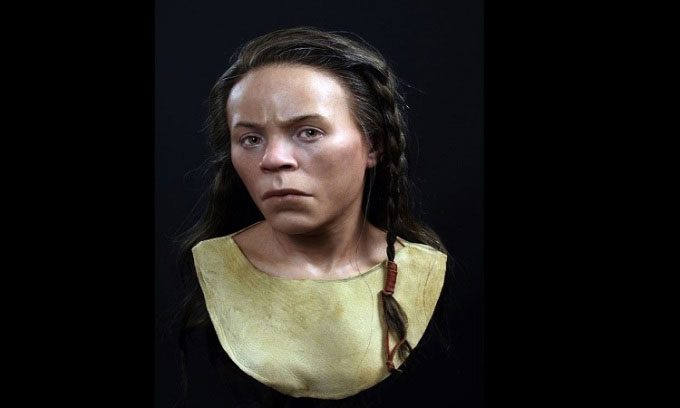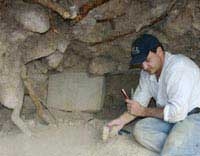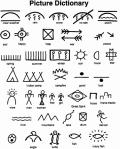Scientists Reconstruct the Face of a Bronze Age Woman (4,200 Years Ago) from Skeletal Remains Excavated in a Quarry in Scotland.
Over 4,000 years ago, a young woman passed away in what is now Scotland, buried in a crouched position within a stone-lined grave. The grave remained intact for millennia until a digger at a quarry accidentally exposed the skeletal remains in 1997. Researchers know very little about the woman nicknamed Upper Largie Woman, named after the Upper Largie Quarry. However, a newly reconstructed image reveals the appearance of the grave’s owner from the early Bronze Age, as reported by Live Science on September 24.

The face of a woman in her 20s from an early Bronze Age grave. (Photo: Oscar Nilsson)
The lifelike bust was displayed on September 3 at the Kilmartin Museum in Scotland, showing a relatively young woman with dark braided hair, dressed in clothing made from deer hide. The young woman appears to be gazing at someone nearby. This reconstruction is the result of the work of Oscar Nilsson, a forensic artist from Sweden.
Following the discovery of Upper Largie Woman, analysis of her bones and teeth indicated that she likely died in her 20s and may have experienced periods of illness or malnutrition. Radiocarbon dating suggests she lived around 1500 – 2200 BCE, during the early Bronze Age. Meanwhile, examinations of various strontium and oxygen isotopes from the remains indicate that she grew up in Scotland. However, the research team did not obtain DNA samples, so they were unable to determine her ethnic characteristics, including skin color, eye shape, and hair type.
Nonetheless, the archaeological team found numerous broken Beaker pottery shards in the grave, indicating that the woman belonged to Beaker culture. This culture originated in Central Europe with people whose ancestors came from the Eurasian steppes and reached Britain around 2400 BCE. DNA evidence suggests that the Beaker culture replaced a large portion of the English population, including communities from the Neolithic era that erected monuments like Stonehenge.
To reconstruct the portrait of Upper Largie Woman, her skull was scanned using computerized tomography and then 3D printed in Scotland. However, according to Nilsson, the remains were missing a lower jaw, and the left side of the skull was significantly fractured. Therefore, the first step he took was to reconstruct the left side of the skull, followed by creating the jaw based on educated guesses. Next, Nilsson considered the woman’s age, gender, weight, and ethnic background, as these factors help determine tissue thickness.
Nilsson selected modern individuals whose features matched those of Upper Largie Woman from a contemporary statistical database and then used their tissue measurements to begin sculpting the reconstruction. Points marked on the simulated skull allowed him to measure the tissue layers and apply plasticine clay to create the facial features. Based on the skull’s contours, Nilsson noted that the woman’s eyes were somewhat widely spaced, her nose was broad and slightly upturned, and she had a rounded forehead and a wide mouth.





















































